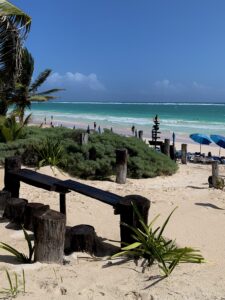The Importance of Conservation in Australia
Australia is essentially a large island. Because of this Australia is home to numerous unique endemic species of plants and animals. Endemic means that many plants and animals are found only in Australia and nowhere else in the world. This alone is a reason to protect an ecosystem.
Examples of endemic animal species in Australia include a wide range of marsupials: such as kangaroos, quokkas, koalas, and many many more. Furthermore, there are over 600 species of stunningly beautiful birds, or snakes that play a crucial role in balancing ecosystems, rising in numbers of crocodiles and massive declining numbers of sharks.
Besides animals, there are also a vast number of endemic plants species. Australia boasts numerous Eucalyptus trees and the third-largest trees globally, the Karri trees. These endemic dominant tree species are found throughout Australia in various types. Additionally, there are unique Snowgum Eucalyptus, which you’ll learn more about in this article later on.
Threats to Nature in Australia
Australia is one of the countries with one of the highest and fastest rates of endangered species in the world. Both above and below the waves, endemic animals and plants are threatened. This is primarily due to two significant reasons: deforestation and feral species (like wild cats) and feral plants or soil.
Annie points out that feral species like cats pose a significant threat to nature in Australia. Eventhough in the Netherlands cats are beloved pets and are praised for their cuteness. Though in Australia it is estimated that catch around 1 million endemic species per night because they are such skilled and successful predators. Since these feral cats are not native to Australia, other endemic species have no defense mechanism against these predators because they do not expect to be preyed upon by these cats. Therefore it is the law that domestic cats must remain indoors at all times.
Additionally, deforestation occurs as land is cleared for agriculture, mining, or urban development. This, of course, has a significant impact on nature, and there is no easy solution to address this issue.
Climate in Australia
As if that’s not bad enough, the impact of the climate crisis is certainly noticeable in Australia. The large wildfires and floods in Australia worsen each year. Currently there are significant floods in Queensland, and preparations are underway for the summer bushfire season.
However, this was and will always remain part of Australia’s climate. Annie explains as an example that Eucalyptus trees even have evolved with fire. Eucalyptus needs the heat to burst open its seeds and reproduce.
Annie emphasizes that we need to learn to work with this type of fire ecology. Historically indigenous Australians have a very good understanding about working with fire as a part of the ecosystem. They consider practices like controlled preventative burns. In these controlled burns, a fire is intentionally set to prevent the spread of a wildfire if one were to occur.
What can you do?
In addition to being important, working with and learning from nature in Australia is also enjoyable and fun. Below, we provide you with a few options.
Unique workplaces in the countryside
Annie has worked in unique locations. Did you know, for example, that Australia has a unique landscape of snow-covered mountains? Annie has worked in the Snowy Mountains in New South Wales, which is one of the few places in the world hosts the growth of a type of Eucalyptus called “snowgums”. Annie explains: working in ecology is very scientifically oriented, but you get to be outdoors in beautiful places while conducting research. Isn’t that cool?
Unique workplaces by the sea
In addition to unique landscapes, Australia is an excellent place to gain more knowledge about life beneath the waves: the sea. Australia is home to two enormous coral reefs, such as the Great Barrier Reef in Queensland and the Ningaloo Reef in Western Australia. The sea is an integral part of Australia, and there is much to learn about it. For example, read here about how you can contribute to monitoring turtles on the Ningaloo Reef!
To learn more about marine life, diving or snorkeling is a great way to acquire knowledge. Annie recommends doing this with someone knowledgeable and being cautious about so-called “tourist traps.” Therefore, make sure to do your research! Read more here about the diverse reefs of Australia.
Working with Wildfires and Floods
In addition to working on land or in the sea, you can also work with the climate! Do you want to contribute to the restoration efforts after wildfires and floods? You can! Moreover, the work you do for restoration activities related to wildfires and floods can count towards extending your working holiday visa! Read more about it here.
Annies examples for volunteer work
We hear you thinking… That sounds interesting. But where do I start? Are there examples?
Certainly! That’s why Annie has curated a selection of excellent programs, volunteer work, and ideas specifically for Work-Wide. In this way you can explore whether there’s an conservation opportunity fitting for you.
The first two examples are Australia-wide, then you will see state specific examples. Happy browsing!
Working with Bush Heritage Australia
focuses on learning about and conserving flora. You can sign up as a volunteer and work on their landscapes during monitoring seasons. Tasks include monitoring plants, collecting trees/plants/seeds.
This organization operates throughout Australia. For more information, visit the Bush Heritage Australia website.
This organization operates throughout Australia. For more information, visit the website of Bush Heritage Australia.
Working with Australian Wildlife
a non-profit organization, focuses on the fauna of Australia. They own and conserve land nationwide, including beautiful remote locations like the Kimberley.
This organization offers the opportunity to potentially engage in hospitality on these sites, as they also participate in eco-tourism. A unique experience, especially during the dry season!
For more information, visit the website of Australian Wildlife.
Work in New South Wales (NSW)
You can volunteer through NSW National Parks. They manage all the national parks throughout the state of New South Wales. They offer various opportunities for volunteers, such as tree planting, wombat surveys, and crop care. So much fun! Read more on the NSW National Parks website or check here for specific programs across NSW.
Work in Western-Australia
You can volunteer through National Parks Western Australia for statewide programs. You can also sign up for monitoring adorable turtles on the Ningaloo Reef in Western Australia through this link.
Work in the Northern Territory
You can volunteer through National Parks NT for statewide programs.
Work in Queensland
You can volunteer through National Parks Queensland for statewide programs. Also, in Currumbin, you can work for the Wildlife Sanctuary on the Gold Coast!
If you prefer working with kangaroos, the Tree Kangaroo Rescue and Rehab Centre in the Atherton Tablelands might be the perfect fit for you!
Of course, in Queensland, you also have the Great Barrier Reef. Definitely worth googling if you’re heading towards Queensland.
Work in Victoria
ou can volunteer through National Parks Victoria for statewide programs.
Work in Tasmania
You can volunteer through National Parks Tasmania for statewide programs.
If you want to learn about the wildlife in Tasmania, Bonorong Wildlife Sanctuary could be the right place for you!
Tasmanian Land Conservancy is another excellent spot for learning about the wild nature in Tasmania. You’ll find great opportunities here!
It was great that we could talk to Annie and that she could give us all these insights! Then the last question standing. So when you come to Australia, aks yourself “How will you contribute to nature conservation in Australia?”













